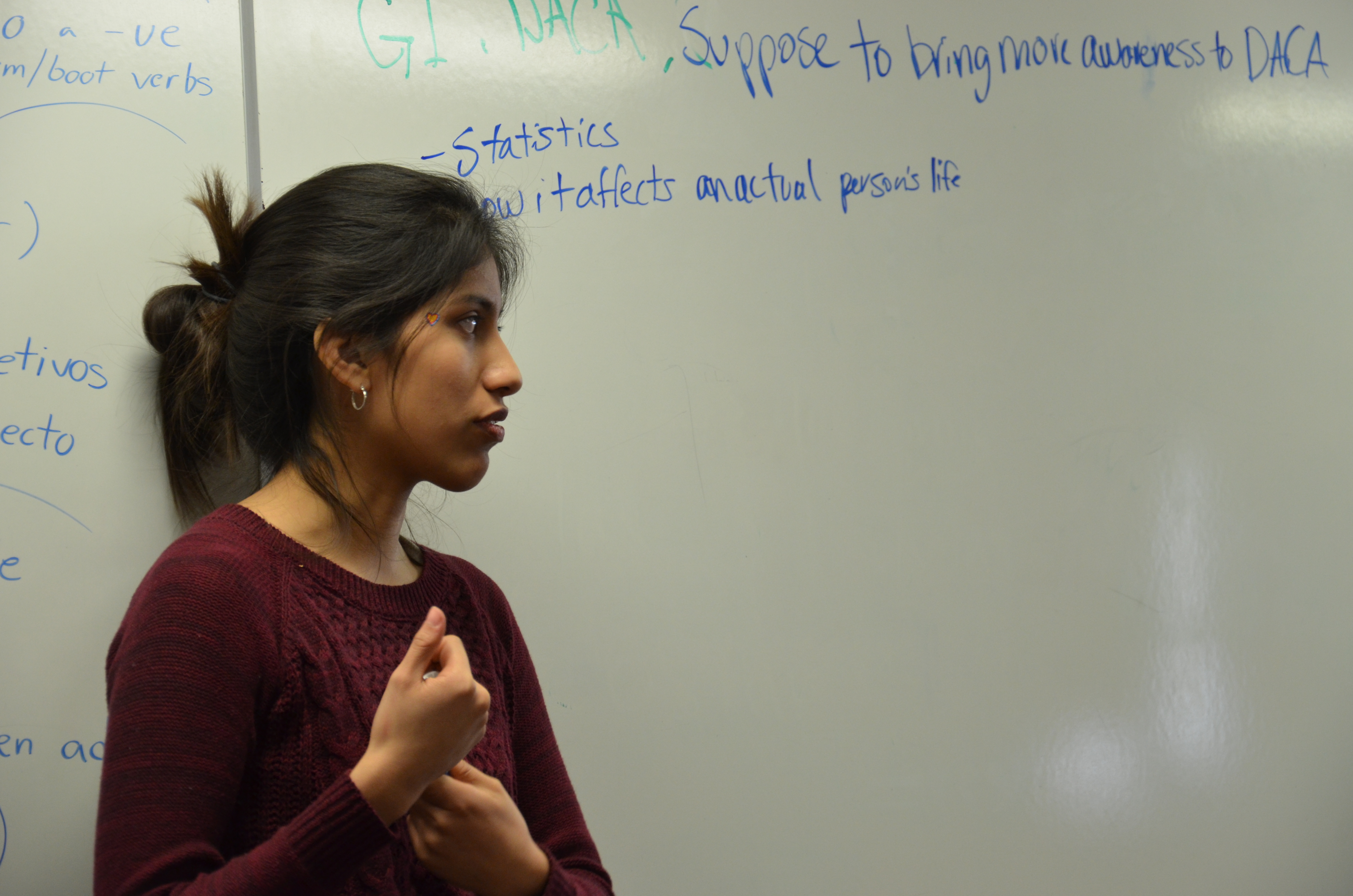For some, it’s deflating to see a Homecoming court that doesn’t represent the entire student body. From 2010-2015, Northwood’s Homecoming Court has included three male Latino students. There have been no female Latin American students on Homecoming Court. No Latino students have ever been crowned the Homecoming King or Queen.
Senior Samantha Aguilar created the Latin American Student Organization (LASO) at the end of 2016 with help from social workers Rachael Norris and Saundra Gardner. Aguilar began this club because of her personal experience at the 2015 homecoming dance.
“I was upset about the ballot for homecoming because there were no Latina girls on it,” Aguilar said. “I feel like I could be a candidate, or any other [heavily involved Latino students] could be a candidate for that position. Why do white people get recognized? I was upset about that, so I felt that I should start something that recognizes Latinos and our accomplishments. Because of me being Latina, people don’t look at me and think, ‘Oh she’s done stuff.’ That’s how it started.”
Latino students have been a growing demographic at Northwood. Northwood’s student population was 9 percent Latino. Now in 2017, Northwood’s student population is 13.4 percent Latino. The number of Latino students is increasing, yet they are not represented in Homecoming Court.
Henry Foust, advisor of student council, agrees that the Homecoming Court confirms the underrepresentation of Latino students.
“It’s a reflection of who students choose,” Foust said. “[student council] receives 20-30 nominations from teachers, and then it’s completely up to the students. It’s a popularity contest.”
According to Aguilar, the purpose of LASO is to make people more open to the Latino community. She also believes that LASO differentiates itself from other clubs in that LASO is conducive for Latino students to feel like they belong.
“I’ve never started [a club] or been part of one where I felt like I was welcomed,” Aguilar said. “I remember when I did Key Club, I wasn’t really there. I couldn’t relate to anybody. No one really cared that I was talking or doing this and that. No one cared if I helped or not. But in this club, I know everybody and it’s easy to relate. We have the same struggles and jokes and face the same stereotypes and racism. It’s easier to connect and be a part of something where I know people feel the same way as me.
Now the president of LASO, Aguilar feels like she stands out in her classes due to ethnicity. In 2015, Aguilar remembers feeling like the only one who could connect some of the lessons taught in her English class.
“I had a class with Mrs. [Jill] Jackl where we read the Tortilla Curtain last year,” Aguilar said. “That book was the thing that most changed me in high school. I related to everything the book was talking about. [That book] spoke the truth, but no one else saw the truth.”
Senior Jennifer Cervantes, vice president of LASO, discuss their experiences in honors/AP courses.
“We need to be more welcoming to others,” Cervantes said. “Especially in honors classes, where you’ll see three or four students who aren’t white. That stands out to me, because I remember in my AP Psychology class, there were like two Hispanic students including myself. It was like, ‘Yeah, we can take these classes too, but we also want to be in those classes and feel welcomed.’”
In addition to reading the Tortilla Curtain, Aguilar remembers in her English class watching a video of an American mayor’s experiences emigrating from Guatemala.
“The video made me cry because [I saw the mayor] struggling so hard and knew that my dad is from the exact same place and did the exact same thing,” Aguilar said. “I remember Mrs. Jackl asked, ‘Do you guys sympathize with this man?’ I was the only one who raised my hand and said, ‘Yes. I feel so bad for him. I have a personal connection to that.’’’
While Cervantes feels like she can talk to other people, she notices that other minorities in her class are not as forthright in the classroom.
Spanish teacher Cristobal Herrera has been the teacher advisor of LASO for approximately five months. Herrera, who said there was not a club like LASO when he was a student, believes that LASO serves an important purpose.
“It’s not only to integrate them more in school or make them more known, but also to empower them,” Herrera said. “It’s to make them see the world differently from what they’re used to. It’s to open them up to more opportunities and to get to know other people. Also, it’s to educate others about [Latino students’] culture, background, simple stories and where they’re from. That’s why it’s important to have a LASO club in school.”
Cervantes says that members of LASO aren’t as recognized by the school as other students who get accepted into college.
“There are some very, very special kids in our club and a lot of them have been getting accepted into college,” Cervantes said. “I feel like it’s no big deal to others, but it is, especially because a lot of these kids come from immigrant parents. They don’t really get a, ‘Oh great job for getting into college’ as other students in our school. We just want more recognition from the school.”
LASO’s president is determined to make sure that Latino students receive acknowledgement.
“The most important thing is getting everybody to know that there is a strong Latino community,” Aguilar said. “That and making sure nobody is overlooked.”
– By Chantal Shine



